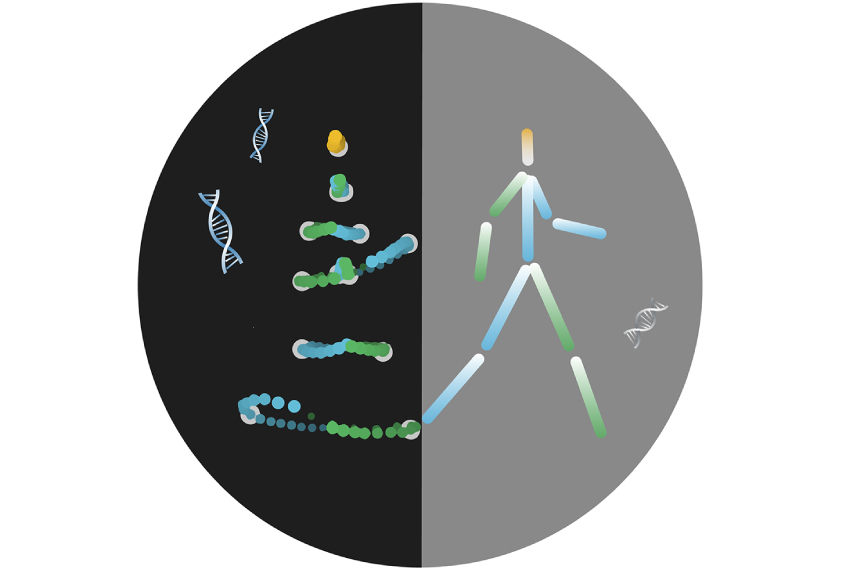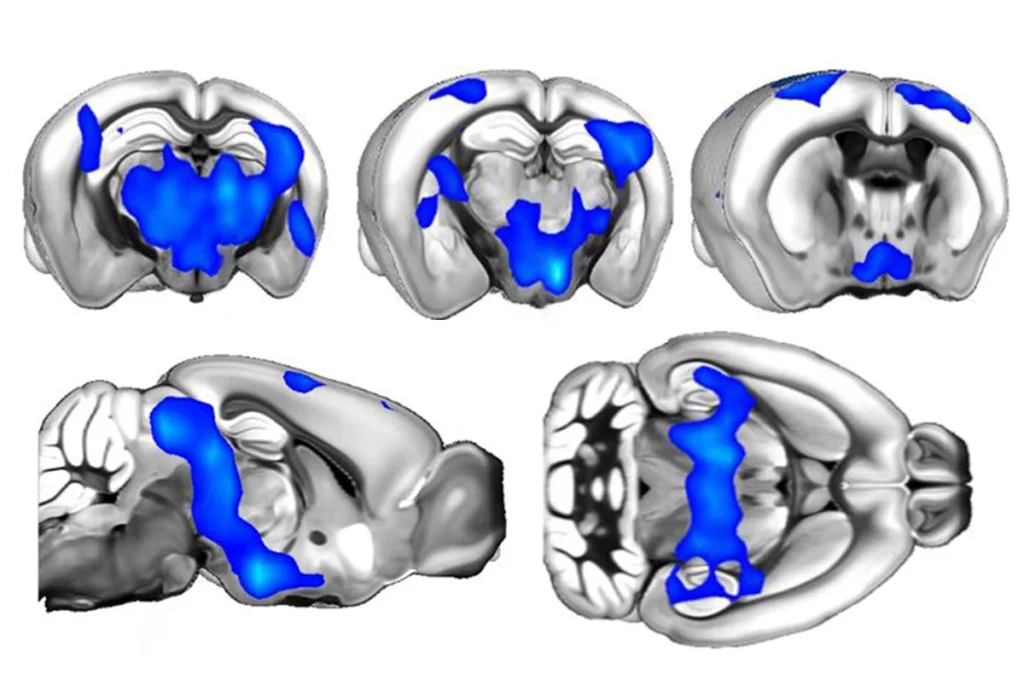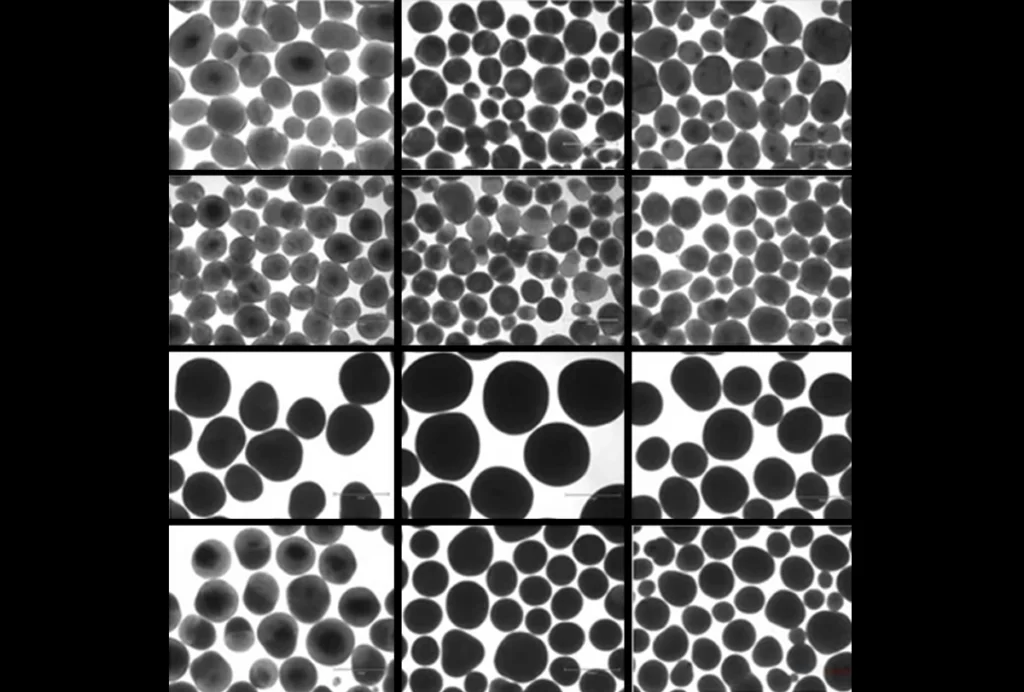
Movement perception, autism traits may share genetic roots
The ability to identify human-like movements is rooted in genetics — and may share those origins with autism traits.
The ability to identify human-like movements is rooted in genetics — and may share those origins with autism traits, a study of 117 twin pairs in China suggests1.
The ability to interpret other people’s movements is important for understanding others’ intentions and making social connections.
People with autism are known to have difficulty recognizing the movement of people and animals, known as biological motion, perhaps because their brains process this motion in an unusual way.
The new work hints that these difficulties are at least in part genetic.
“There are common genetic roots for the heritable aspect of biological-motion perception and autistic traits,” says study investigator Ying Wang, associate professor at the Institute of Psychology at the Chinese Academy of Sciences in Beijing.
The work also answers a longstanding question among scientists in this field: Does the difficulty interpreting biological motion arise independently and contribute to autism features, or is it a consequence of those features? The question had stalled progress in this area.
“This paper pulls me and others out of the rut,” says Maggie Shiffrar, professor of psychology at California State University, Northridge, who was not involved with the work. “It’s not a secondary result of living with autism.”


Joint attention:
The researchers tested the perception of biological motion in 117 sets of same-gender twins between 15 and 27 years old. These twins are all part of the long-running Beijing Twin Study, designed to investigate the roots of emotional and behavioral problems in children and adolescents2. Of the 117 twin pairs, 59 are identical, meaning each pair share all of their genetic material. The remaining 58 are fraternal: They share half of their genetic material, just as other siblings do.
The participants watched one-second videos of moving dots on a black screen. In one part of the study, some of the videos show dots that mimic a person walking on a treadmill; in the other videos, all of the dots move randomly. Participants had to choose the videos that depict a walking figure.
On this test of so-called ‘global biological motion,’ the scores of fraternal twin pairs were just as similar as those of identical twins, indicating little contribution from genetics in this ability.
But genes do seem to play a role in the ability to make sense of ‘local biological motion,’ or the movement patterns of body parts.
In a second test, the participants watched a different set of videos and determined whether the figure was moving to the right or the left. In these videos, the researchers scrambled the walking figures — for example, placing the arms below the legs — so that participants had to infer direction from the body parts.
The scores of identical twins on this test are more similar than those of fraternal twins, pointing to a role for genetics. The study appeared 22 January in the Proceedings of the National Academy of Sciences.
“[The twin methodology] allowed us to decompose the genetic and environmental contribution to biological-motion perception,” Yang says.
Telling traits:
The researchers also administered the Autism Spectrum Quotient (AQ), which measures autism traits in the general population. They found that the scores of identical twins on this test track more strongly than those of fraternal twins.
The result is consistent with studies showing that autism traits are heritable.
The higher a participant’s score on the AQ, the new study found, the more trouble she has perceiving local biological motion. This finding suggests that autism traits and the ability to perceive local biological motion share common genetic factors, Wang says.
The findings also hint at a genetic origin for the difficulties people with autism have processing biological motion.
“It’s likely that children with autism are genetically predisposed to have deficits in local biological-motion processing and consequently attend less to biological-motion information during critical developmental periods,” Wang says.
Some experts urge caution in interpreting the results, saying it’s not clear the scrambled walkers test accurately measures the ability to perceive local biological motion.
“When people are asked to judge the moving direction of the whole set of local motions, do they only process at the level of separate local motion signals?” says Daniel Yang, assistant research professor of pediatrics at George Washington University in Washington, D.C., who was not involved in the work.
The test may instead measure the participants’ ability to integrate separate pieces of motion into a coherent whole, Yang says.
In any case, the results do suggest a genetic link between autism traits and biological-motion detection, he says.
The researchers plan to repeat their work in individuals with autism. Eventually, the results could inform therapies to help children with autism more readily recognize biological motion — as an entrée into improved social skills.
Recommended reading

Building an autism research registry: Q&A with Tony Charman

CNTNAP2 variants; trait trajectories; sensory reactivity

Brain organoid size matches intensity of social problems in autistic people
Explore more from The Transmitter

Cerebellar circuit may convert expected pain relief into real thing

